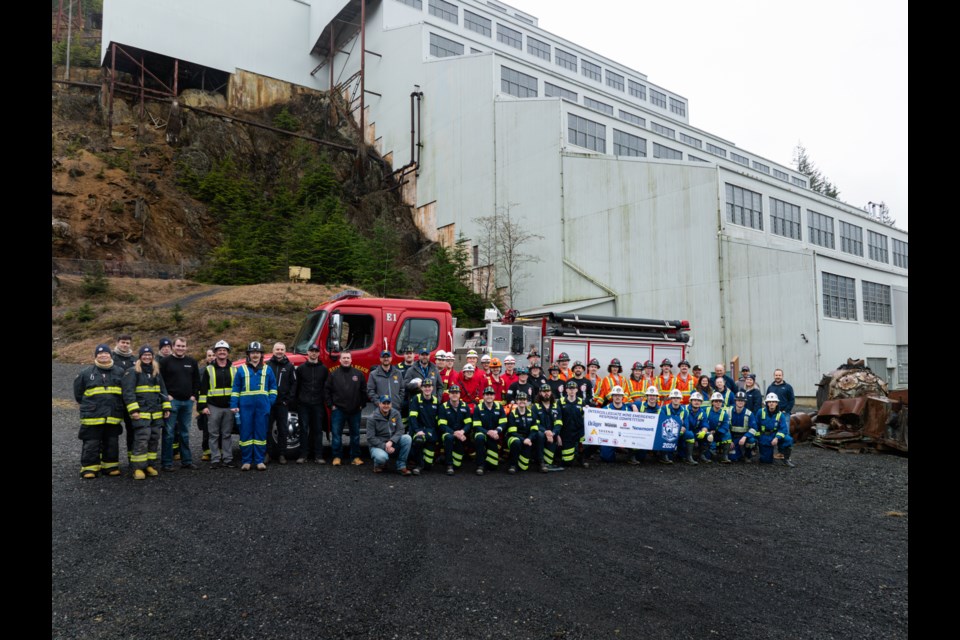After a massive earthquake, fires burn above ground and smoke fills an underground mine shaft.
This is the simulated emergency that recently played out during the held in the Sea to Sky Corridor.
These mock exercises with university student teams tested participants' knowledge and skills to the max.
The competition, held at Britannia Mine Museum on Feb. 23 and 24, saw two U.S. teams and three Canadian university teams participate.
, it was only the second intercollegiate mine rescue competition in Canadian history.
Most of the students are part of mine engineering programs at their universities.
Judges of the competition were company-employed mine rescue team members and other professionals in related fields.
Put to the test
took first place overall, first in mass casualty triage, and first in underground search and rescue.
Other teams were from the University of British Columbia (which came in second overall and first in the rope rescue competition), Laurentian University (third), the University of Alberta (fourth) and the University of Utah (fifth).
Each team had seven or eight members.
Participants had to respond to emergencies resulting from the simulated earthquake, with realism being the event's primary goal, according to event organizer Dan Hagn, a fourth-year UBC engineering student.
Hagn, who is slated to graduate next month, wanted the event to promote the safety culture within the mining industry.
The teams fought live fires, responded to a mass casualty accident, extricated victims using high-angle rope rescue, conducted an underground search and rescue mission, as well as tackled other technical challenges.
Local hosts
Britannia Mine Museum staff were great hosts, closing some areas to tourists for the event, and Britannia Beach Volunteer Fire Department was invaluable in supporting the competition, said Hagn.
Volunteers from the department hosted the firefighting event above ground.
"It was really fun to the students; they fought fires right in front of the fire department," he said.
As for what made the West Virginia team victorious, Hagn said it was their work ethic.
"They practice three times a week at 6 a.m. The work ethic is incredible. They have almost a military kind of obedience to the coaches. It's very interesting," he said.
"They also have a full-time coaching staff of three, and most other teams have [one] coach," he said, noting that West Virginia's coaches are on-site while other team coaches are often not.
West Virginia is known for its long mining history.
According to a U.S. Energy Information Administration's , as of 2022, there were 151 active mines in the state.
"It's pretty much the lifeblood of the state," said Hagn.
The currently profiles 78 metal and coal mines in the province.Lessons learned
Hagn said his biggest takeaway from the student competition was that the mistakes made during the exercises will be learned from, so they aren't repeated in real life.
Some of the mistakes they made would have been fatal in an actual emergency, he noted.
"All four teams killed one of the victims in the gas environment. That's a mistake they'll never make in their real life," he said.
"The takeaway is that the lessons learned here are probably going to save a life at some point. And that's kind of mind-blowing."
Another highlight of the event for Hagn was the camaraderie formed among the members of the teams.
There was a casual gathering after the closing ceremonies, and Hagn said many students vowed to stay in touch.
"We've actually started to create a student mine community that spans the entire continent, which is very cool."
As for Hagn's future, he has already signed a contract for a job in mining after his graduation.
He will be working for Pogo Mine, in Alaska.
The recent Britannia Beach mock emergency event partnered with Draeger Safety, Redding Mining, the Emergency Response Team from Newmont Red Chris mine, and Dynamic Rescue Systems.
Funding was provided by UBC Applied Science and Skeena Resources.




